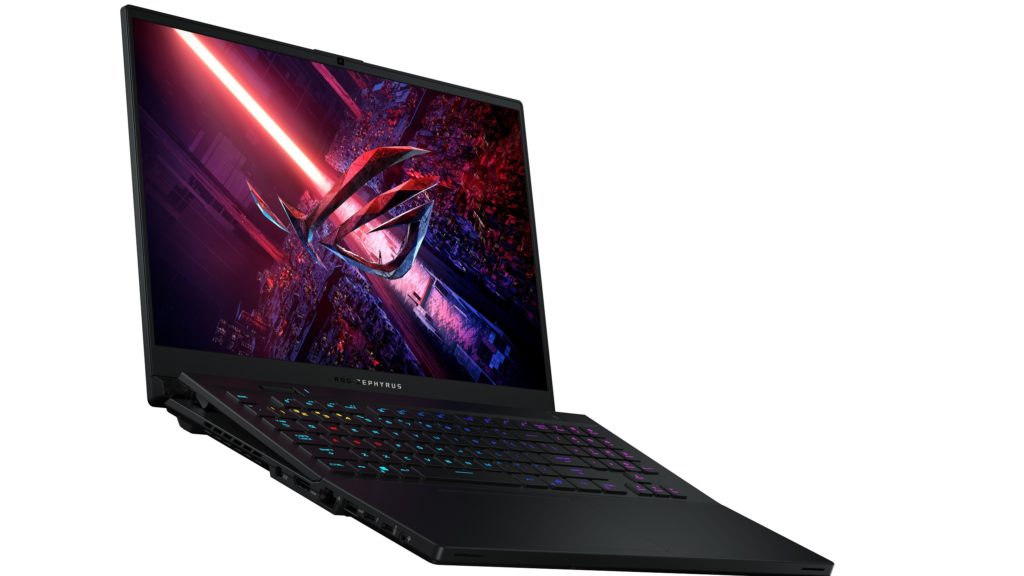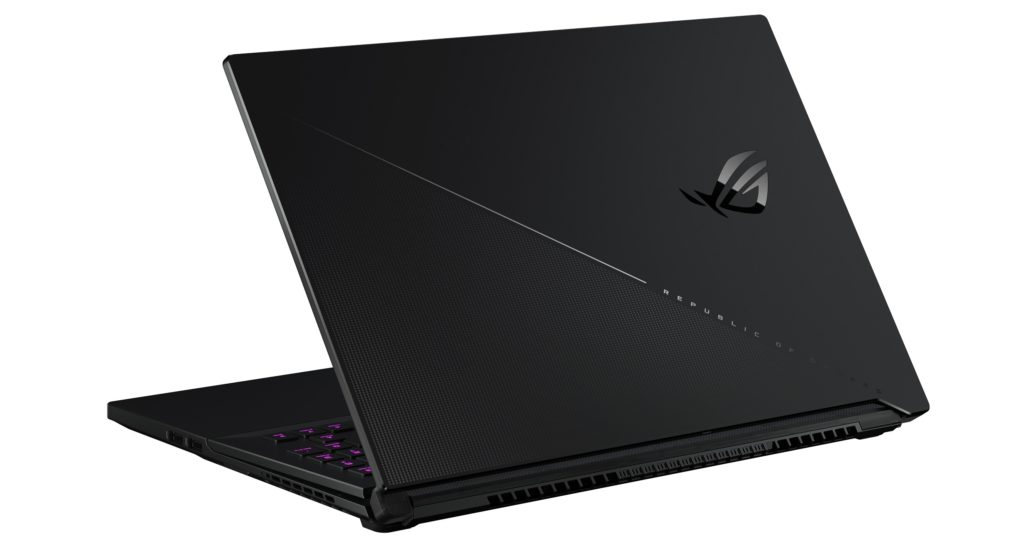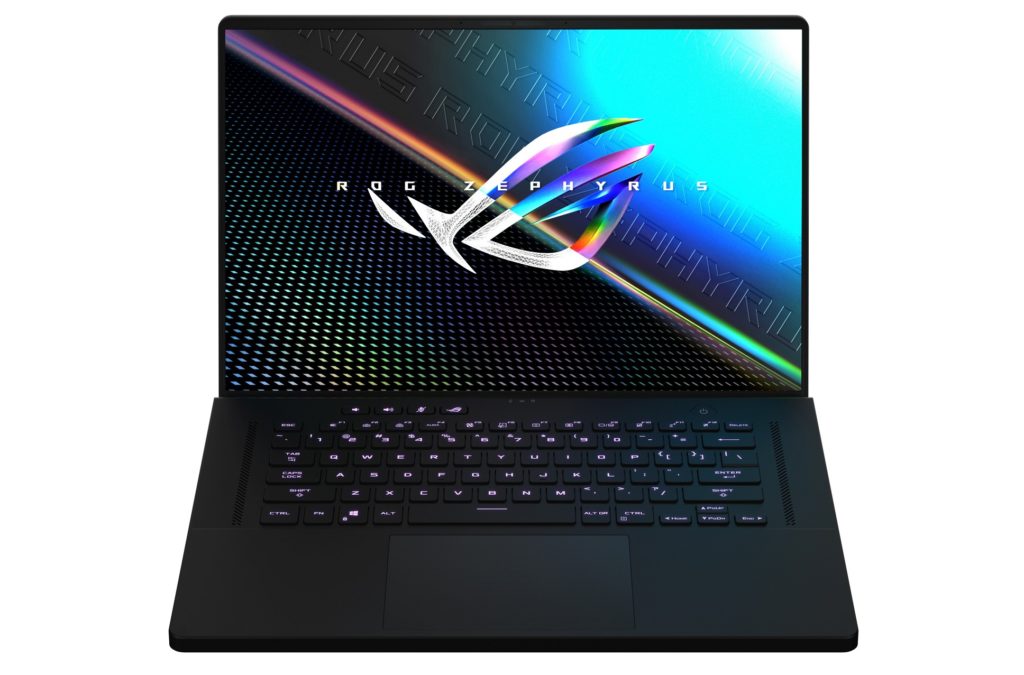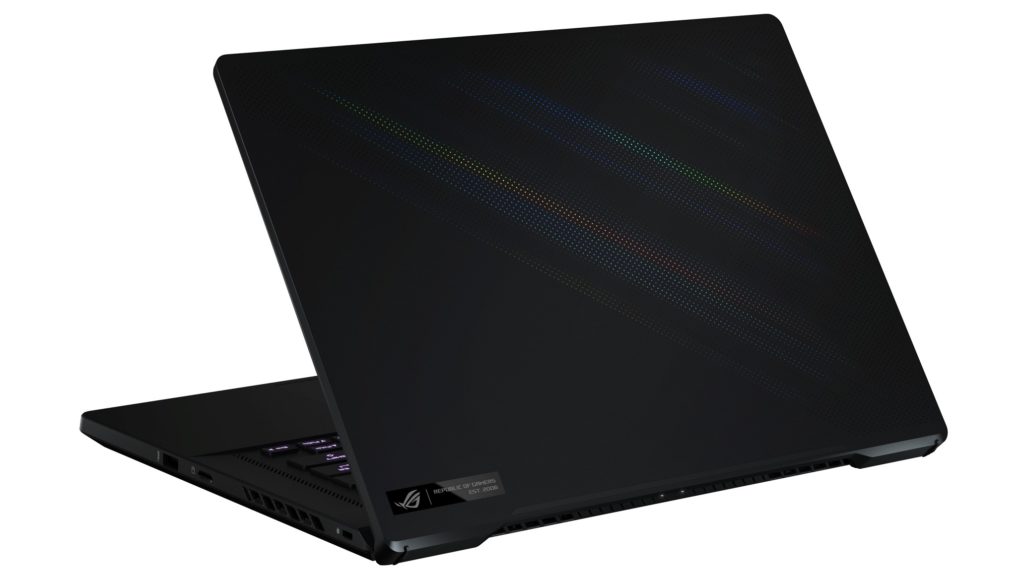The new ROG Zephyrus laptops complement the already stunning ROG 2021 lineup, now with an Intel twist
Fresh off the back of the incredible AMD Ryzen 5000 series laptops released earlier this year, the new range come with the brand new Intel 11th Gen CPUs.
In comparison to the 10th Gen Intel processors, there’s no discussion, the new AMD processors absolutely smoke them in performance tests. With these new Intel CPUs, however, I don’t think it’s going to be as clear cut. In ASUS’s TUF Dash F15, the Intel i7-11370H we tested had higher single-core performance than a desktop i9-10900K, and was equal to or better than the R9-5900HX. The only place it couldn’t match them was in multi-core performance due to only having 4 cores.
The new Zephyrus machines have the all-new 8 core (up to) Intel i9-11900H processors, clocked up to 4.9 GHz. On paper at least, the Zephyrus S17 and M16 have the potential to bring the fight to AMD again, and I can’t wait to see what the results are like.
ASUS ROG Zephyrus S17

Key Features:
- Components
- Intel Core i9-11900H (50-90W)
- Nvidia GeForce RTX 3080 16Gb (TGP 115W / 140W Dynamic Boost)
- 3x PCIe 4.0 SSDs (HyperDrive Ultimate RAID 0 array – 10.5 GB/s)
- Up to 48GB DDR4-3200 RAM
- Display
- 17″ QHD 165Hz G-Sync and Advanced Optimus / UHD 120Hz Adaptive-Sync
- 100% DCI-P3 Colour Gamut
- Pantone Validated
- Dolby Vision
- 400 Nits Peak Brightness
- System
- Optical Mechanical Keyboard
- AAS PLUS Cooling
- Six-speaker arrangement
- 90 W/hr Battery
- 19.9mm Thin Low-profile Shell
- Configurable Multi-wheel
- Webcam – yes, ASUS has brought back the webcam!
- Biometrics – Fingerprint Scanner
However you look at it, this is one beast of a PC. The CPU is an unknown quantity as of yet, but as we mentioned above, it has the potential to deliver incredible performance. The GPU has a TGP of 115W, which is in the middle of the 80-150W range. With dynamic boost, it can reach up to 140W, which is higher than the excellent ROG Zephyrus Duo SE. Maximum RAM of 48GB leads me to conclude that 16GB must be soldered to the board, with an additional 32GB that can be added to the extra slot, which is not uncommon and, for gaming at least, more than adequate.
Even considering how slim this laptop is, cooling will not be an issue. ASUS’s cooling solutions are already very efficient: heatsinks fed by carefully arranged heatpipes, Arc Flow fans and liquid metal thermal compound. Additionally, and similar to the hinged second screen on the Zephyrus Duo, AAS Plus cooling is also included, which raises the keyboard 5° when you open the screen. This allows cool air to be sucked in through the top of the laptop and it drastically improves the cooling. It also angles the keyboard a little higher into a better typing/WASD-hammering position, which is an added bonus.

The SSD array is very interesting. It uses three PCIe Gen 4 SSDs in HyperDrive Ultimate RAID array, to produce a mind-bogglingly fast potential speed of 10.5 GB/s. In the lower specced variants, they utilise a single PCIe 4.0 SSD, which should still be muy rapido.
ASUS ROG’s laptop displays have been outstanding recently, and we can expect the same quality of QHD and UHD panels as seen in the Zephyrus Duo SE and Strix Scar 15. These displays have been astoundingly good, with excellent responsiveness, almost zero ghosting and outstanding colour accuracy and vibrancy.
Another area where ROG has excelled lately is its speaker setups, with their flagship notebooks packing impressive sound quality, with that most elusive of audio features, actual bass! The Zephyrus S17 has a six speaker setup, including a pair of woofers, so we are expecting great things from the audio.
I could go on for hours about this laptop, but I need to save something for the review! I’ll finish with a knowing nod of appreciation towards the optical mechanical keyboard, as the one on the Strix Scar 15 was brilliant, and the Zephyrus 17 even has a numberpad.
ASUS ROG Zephyrus M16

Key Features:
- Components
- Intel Core i9-11900H @ 4.9GHz
- Nvidia GeForce RTX 3070 8GB (80W/100W Dynamic Boost)
- Up to 2TB PCIe 4.0 SSD with additional M.2 slot (Supports RAID 0)
- Up to 48GB DDR4-3200 RAM
- Display
- 16″ QHD 165Hz Adaptive-Sync
- 16:10 Aspect Ratio
- 100% DCI-P3 colour
- Pantone Validated
- 94% Screen to Body Ratio
- Dolby Vision
- 500 nits Peak Brightness
- System
- Stealth Type Keyboard
- 180° ErgoLift Hinge
- Six-speaker arrangement
- 90 W/hr Battery
- 19.9mm Thin Low-profile Shell
- Webcam
- Biometrics – Fingerprint Scanner
Much like the Zephyrus S17, the M16 has far more innovative features than just what’s listed above: Things such as the twin USB-C ports that support DisplayPort, meaning you can connect three external displays; a MicroSD slot; or the Thunderbolt 4 connection, which can hook up to an external GPU.
We’re going to focus on the main points of interest for now. We’ve covered the new Intel CPUs, and the M16 has the same options as the S17. The GPU is a low TGP variant of the RTX 3070, though, which is technically what would have been classed as a MaxQ GPU before. It’s essentially the same as in the TUF Dash F15, with the TGP of 80W, however, the M16 has dynamic boost up to 100W in comparison to just 85W on the Dash F15. The ROG Strix G15 also had an RTX 3070, but with 115W of available power it delivered frame rates up to 20% than the lower powered GPU. How much of that difference was down to the CPU in the Dash F15 remains to be seen, but you can still expect the M16 to comfortably surpass 60 fps with Ultra settings at the native 1440p.

For me, the real star of the show here is the incredible display. 1440p at 165Hz is about perfect for a screen of this size, but it’s the excellent 500 cd/m² brightness and 100% DCI-P3 (cinema-grade) colour gamut that has me most excited. Along with Dolby Vision support, this gives content creators professional-level control over their creations. The M16 also has a 16:10 aspect ratio, which is a definite plus if you are productivity. Finally, putting the icing on the cake is the incredible 94% screen to body ratio; Bezels are just 4.6mm thin on all sides of the display.
Of the other announced features, a similar six-speaker setup has been included, a capacious 90WH battery, and somehow ASUS has even slipped a webcam into that tiny bezel. The ErgoLift hinge allows the display to fold back a full 180°, which also raises the underside of the laptop to increase airflow and aid cooling. The stealth type keyboard is designed to keep noise under 30 decibels for an unintrusive typing experience, and the whole keyboard tray is coated in a smudge-resistant coating.
There’s much more we could mention, but we want you to read the reviews once we get our hands on these laptops. Hopefully this brief preview has got you as excited as we are to check out the newest editions to ASUS ROG’s outstanding 2021 line up of laptops.
Check out the ASUS and ASUS ROG social channels:
ROG Facebook: http://www.facebook.com/asusrog
ROG Twitter: http://www.twitter.com/asus_rog
ASUS Global Facebook: http://www.facebook.com/asus
ASUS Global Twitter: http://www.twitter.com/asus

